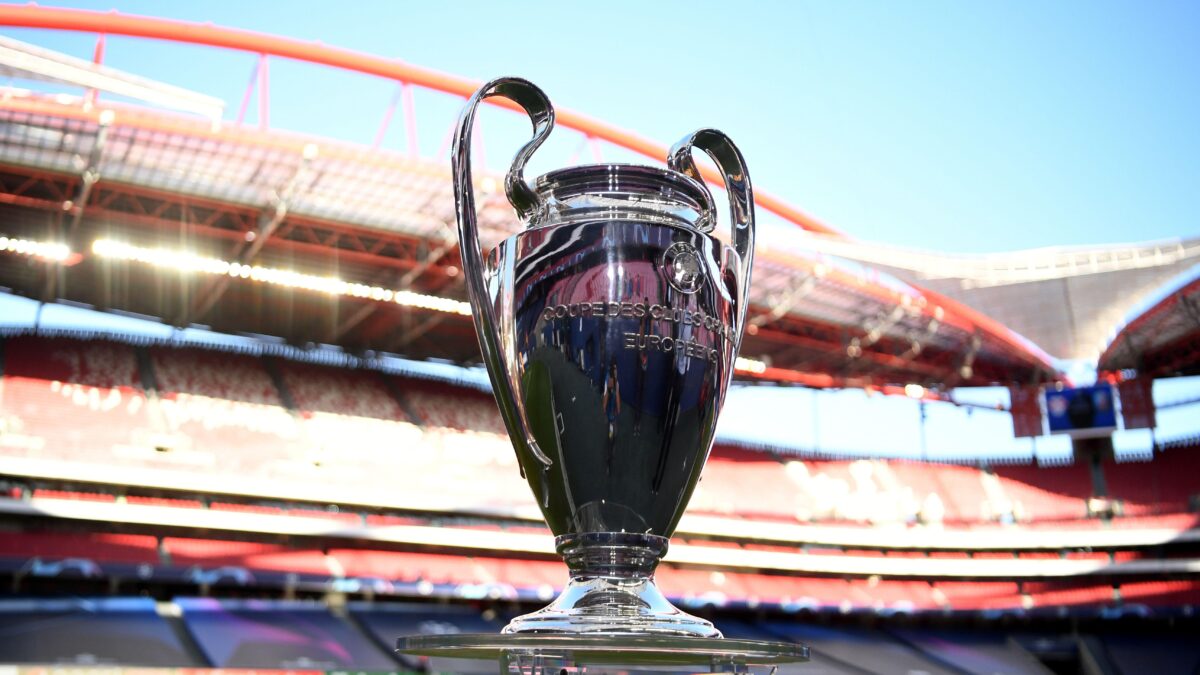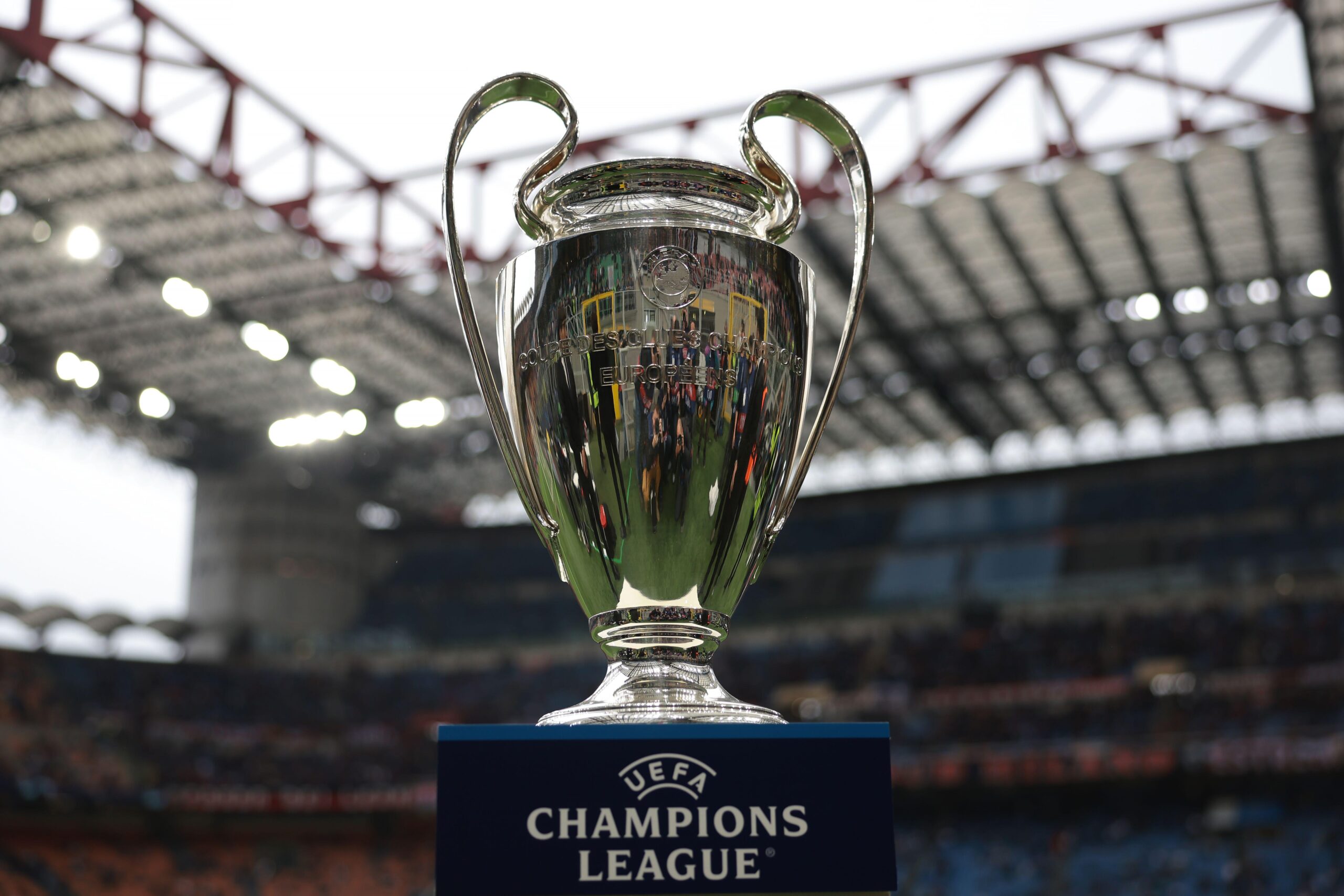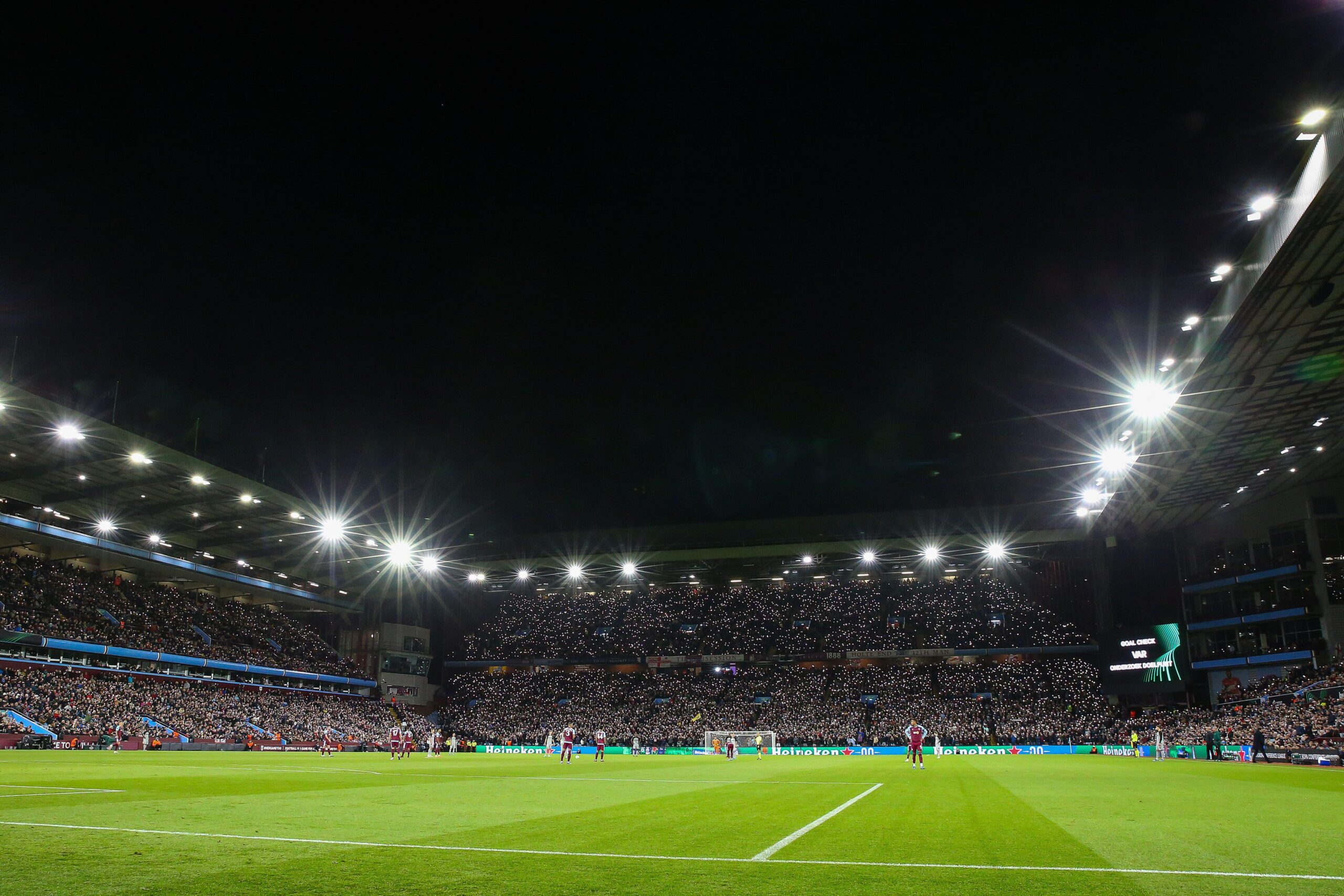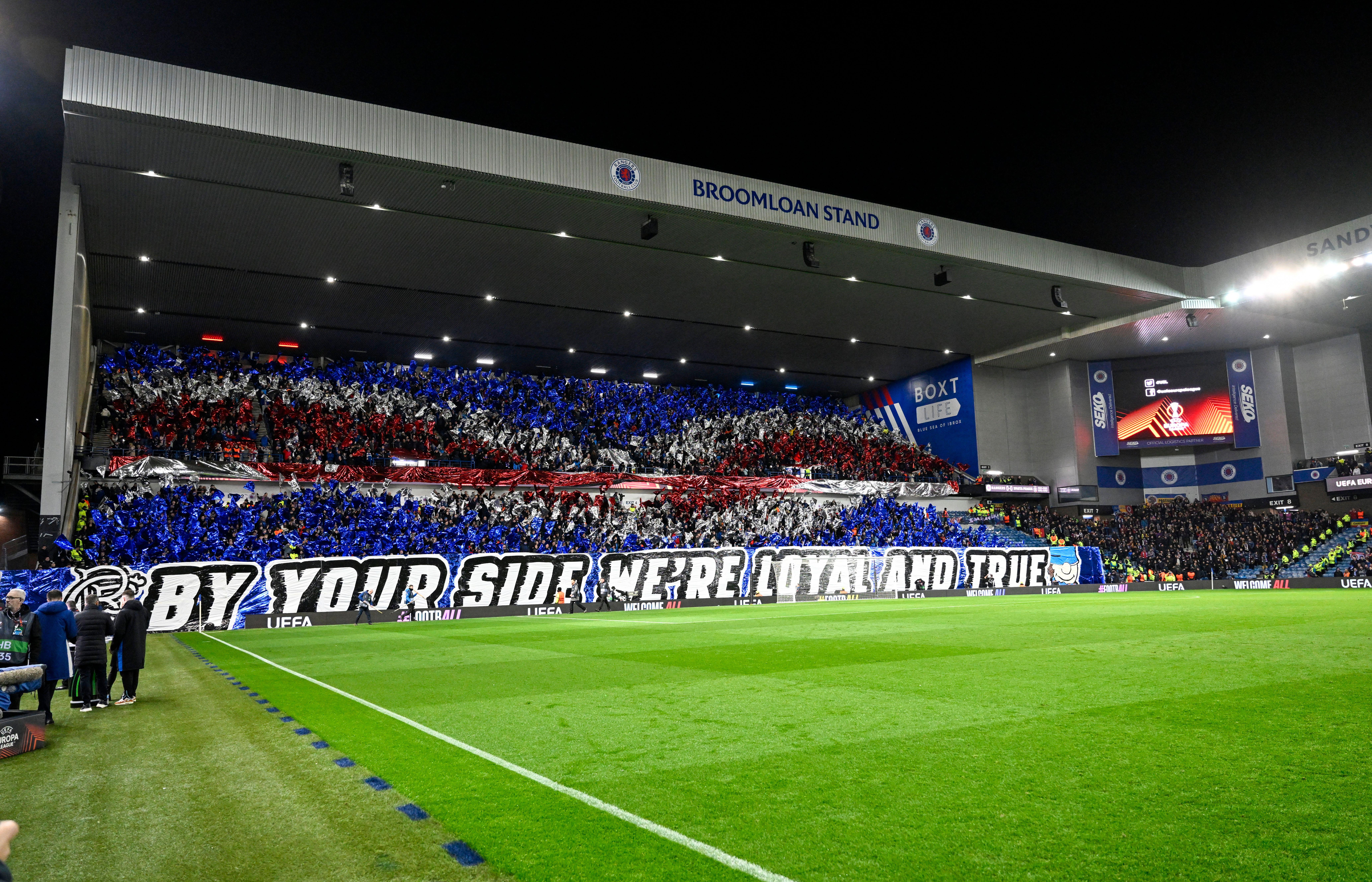UEFA Champions League 2024/25: Everything you need to know
 Will Jackson
Will Jackson 
For the first time in over two decades, the UEFA Champions League is undergoing a fundamental format change next season.
The last 21 seasons of Europe’s premier club competition have all operated under the same, simple to understand format: 32 teams in the group phase, top two go through to the round of 16 which commences a two-legged knockout phase..... but you already knew this!
Well, that’s all about to change; UEFA is now all about that Swiss-system.
If you’re still confused about how the new-look Champions League is going to work, or have no idea in the first place, well first of all, we don’t blame you, but secondly we will attempt to succinctly, clearly and concisely as possible explain the new format.
How does the new Champions League format work?
This rather snazzy video from UEFA, in fairness, does do a good job of outlining the format changes, while making the whole thing sound significantly more exciting than it’s actually likely to be.
Let’s emphasis the key points and dig a little deeper into what impact these changes will have.
Here are the headlines:
- 36 teams will qualify for the competition, up from the previous 32.
- The group stages has been abolished, with all teams featuring in a single, ginormous league table.
- Teams will play 8 matches, an increase from 6, against 8 different opponents- 4 at home and 4 away.
- Clubs ranked 1-8 will go straight through to the round of 16.
- Clubs ranked 9-24 will compete against one-another in an extra knockout round to reach the last 16.
- Clubs ranked 25-36 will be eliminated; no more dropping into the Europa League.
I’m sure that clears it all up... right? No? Ok, let’s examine each of these aspects a little more.
Where do the 4 extra places go?
For this question, we’ll give you both the official UEFA answer, before translating that into everyday English.
We promise this is the driest section of the article, so please don’t be put off the sections below... feel free to skip this paragraph!
As has been much discussed, two places will be awarded to the two leagues with the highest single-season UEFA Coefficient ranking, or the two leagues who performed best in European competitions this season, with Serie A and the Bundesliga awarded an additional fifth spot.
One will go to the league ranked fifth in UEFA’s five-year Coefficient ranking, or Ligue 1 as it’s more commonly known, which now has 3 direct spots +1 in qualifying, up from 2 direct spots +1 in qualifying.
The final additional team will come from the qualifying Champions Path, more on that towards the bottom of this article, allowing 5 clubs, up from 4, who are domestic champions of a league ranked 11-55 to come through qualification. Essentially, an extra champion of a mid-ranked league (Serbia, Turkey, Switzerland, Denmark, Croatia, Greece etc.) will get in.
How will the league phase draw work?

First and foremost, teams will now play 8 league phase matches against 8 different opponents, 4 at home and 4 away.
As in the old days, the clubs will be split into 4 pots, more on who will be in each of those later, based on coefficient ranking, with the top-ranked teams in pot 1 all the way down to the lowest-ranked teams in pot 4.
Clubs cannot face other clubs from the same national association (country/league), but no other restriction apply.
Team will face 2 opponents from each of the 4 pots including their own, 1 at home and 1 away, but this is still all very abstract, so let’s use last season’s winners Manchester City, who will be in pot 1, as an example.
Their fixtures, hypothetically and in no particular order, could look something like this:
Home
Paris Saint Germain (Pot 1)
Juventus (Pot 2)
PSV Eindhoven (Pot 3)
Stuttgart (Pot 4)
Away
Borussia Dortmund (Pot 1)
Atlético Madrid (Pot 2)
Celtic (Pot 3)
Bologna (Pot 4)
As you can see, there’s no limit on how many clubs from a different country a club can face, in fact it’s more than likely that teams will meet more than one club from Serie A or the Bundesliga in particular, considering both will have five, or potentially even six, clubs competing.
From UEFA’s point-of-view, this format change means Pot 1 teams can now face other Pot 1 teams, creating more marquee match-ups, while smaller clubs can also benefit, with Celtic for example getting the opportunity to face other lower-ranked sides from outside the ‘big five’ leagues.
But how will the draw actually be made? Well, no one is quite sure yet.
Back in March, it was widely reported that the draw will be partially conducted by a computer system because a manual draw would take ‘anywhere between three and four hours’, longer than the 2019 film The Irishman.
I can’t be the only one imagining Giorgio Marchetti, everyone’s favourite UEFA vice secretary general, pressing a big red button, as if hosting a cheesy, mid-afternoon ITV4 game show, saying ‘let’s find out who Bayern Munich’s opponents will be’.
The fact the draw will be conducted by a computer is clearly, massively open to manipulation, despite UEFA’s insistency the process ‘will be secure’, whatever that means, so the maiden draw of this kind later this year will be a must-not-miss event.
What are some of the many issues with this new format?

Firstly, the new format is complicated and people don’t like complicated.
Casual fans tuning in don’t want an elongated explanation about how the format works, what the game they’re watching means and if it is important or not.
More importantly, this format means more games, with clubs now guaranteed 8 fixtures, up from 6, while the finalists will now play 15 matches, or possibly even 17, up from the previous 13.
A total of 189 fixtures will take place (excluding qualifiers) a massive 51.2% increase from the 125 played under the current format.
It is obvious why this is happening, money, both in terms of matchday (teams playing more home games) and broadcast, with UEFA already earning around €2.6 billion from selling rights to TV companies worldwide.
However, in an already congested schedule, that’s only going to be exacerbated by FIFA’s Club World Cup expansion, players are reaching breaking point and adding extra Champions League games with no consideration for them shows where governing bodies’ priorities lie.
Lastly, this Swiss-system format completely eliminates any semblance of jeopardy for big clubs, with 24 of 36 teams advancing.
A club’s ranking in the league phase table will determine their opponents in the knockout stages; in the first knockout round, it’ll be 9th vs 24th, 10th vs 23rd, 11th vs 22nd.... etc, akin to a seeded tennis or darts tournament.
Thus, there will no longer be any more knockout phase draws, with the teams finish 1st and 2nd unable to meet until the final.
So, UEFA would argue that ‘every point counts’ as clubs are incentivised to finish as high as possible, eliminating dead-rubbers, but it’ll be interesting to see if this is the case in practise.
Also, on the final matchday, when all 18 fixtures will be played simultaneously, what jeopardy will there be a for big clubs; will neutrals be that interested to find out who sneaks into 24th?
At least in the past, clubs could find themselves in a difficult group, this season’s Group F featuring PSG, AC Milan, Newcastle and Dortmund a perfect example, but groups of death are a thing of the past.
What are the key dates?
| 9-10July | Qualification begins- fixtures every midweek in July & August |
| 27-28 August | Play-off second legs- League phase line-up finalised |
| 29 August | League phase draw |
| 17, 18 & 19 September | League phase Matchday 1 |
| 1 & 2 October | League phase Matchday 2 |
| 22 & 23 October | League phase Matchday 3 |
| 5 & 6 November | League phase Matchday 4 |
| 26 & 27 November | League phase Matchday 5 |
| 10 & 11 December | League phase Matchday 6 |
| 21 & 22 January | League phase Matchday 7 |
| 29 January | League phase Matchday 8 |
| 11/12 & 18/19 February | First knockout round 1st & 2nd legs |
| 4/5 & 11/12 March | Round of 16 1st & 2nd legs |
| 8/9 & 15/16 April | Quarter-final 1st & 2nd legs |
| 29/30 April & 6/7 May | Semi-final 1st & 2nd legs |
| Saturday 31 May | UEFA Champions League Final- Allianz Arena Munich |
You may notice, matchday one of the Champions League is taking place across three days, Tuesday, Wednesday and Thursday, for the first time ever.
That’s because, UEFA are introducing “exclusive weeks”, where only one of their competitions will take place spread across a specific week.
UEFA Champions League exclusive week: 17-19 September.
UEFA Europa League exclusive week: 25-26 September.
UEFA Conference League exclusive day: 19 December.
This hasn’t been widely reported, hence why not many people know about it, so I can’t wait for the confusion and outrage it’s going to cause!
Fundamentally though, right now, between September and January, UEFA reserves 6 mid-weeks for their club competition fixtures, a figure that’ll rise to 10, which surely isn’t sustainable for domestic leagues and cups.
In England, the EFL is still yet to confirm any of the dates for next season’s Carabao Cup fixtures, and this is why!
UK broadcasting changes for the Champions League

Since 2015/16, BT Sport (now TNT) have been the exclusive rights holders to live Champions League matches in the UK and, since ITV lost the highlights rights at the end of the 2017/18 season, they’re exclusivity has expanded to highlights too.
Well, that’ll all change from next season.
TNT are still the predominant rights holder, exclusively broadcasting 172 matches including the final, which they are legally required to offer free-to-air in some capacity.
However, Amazon Prime will also show 17 matches, getting first pick of a Tuesday fixture each matchday, as ITV used to do in the noughties, so expect the most high-profile game featuring a British club to be on Prime.
Lastly, and by far the most exciting aspect, we’re getting Champions League Match of the Day!
Yes, the BBC have won the rights to a Wednesday night highlights show, bringing the competition back onto terrestrial television, even if only in a highlights capacity, which is a fantastic development.
Who has qualified for the Champions League league phase?

A total of 29 clubs will qualify directly for the Champions League league phase; at time of publication on 16 May, 24 of these spots have been snapped up:
Premier League (4):
Manchester City, Arsenal, Liverpool & Aston Villa.
La Liga (4):
Real Madrid, Barcelona, Girona & Atlético Madrid.
Bundesliga (5):
Bayer Leverkusen, Bayern Munich, Stuttgart, RB Leipzig & Borussia Dortmund.
Serie A (5):
Internazionale Milano, AC Milan, Bologna & Juventus + 1 other (likely Atalanta).
Ligue 1 (3):
Paris Saint-Germain & Monaco + Lille or Brest (one will qualify directly, the other enter Q3).
Eredivisie (2):
PSV Eindhoven & Feyenoord.
Primeira Liga (2):
Sporting Clube de Portugal & Benfica.
Jupiler Pro League (1):
Champions TBC- one of Anderlecht, Club Brugge or Royale Union Saint-Gilloise
Scottish Premiership (1):
Celtic
Austrian Bundesliga (1):
Champions TBC- either Sturm Graz or RB Salzburg.
Who is involved in qualifying and who is likely to reach the league phase?

Qualifying is split into two sections, so we’ll address them separately.
Champions Path
The champions of the domestic leagues ranked 11-55, excluding Russia, so 43 clubs in total, will be competing for 5 spots in the Champions League league phase.
Depending on the strength of their league, some enter in the first qualifying round, with others joining as late as the play-off round.
Clubs with a realistic chance include: Crvena zvezda (Serbia), Bodø/Glimt (Norway), Dinamo Zagreb (Croatia), Malmö (Sweden), Ferencváros (Hungary), Ludogorets (Bulgaria) and Qarabağ (Azerbaijan) as well as the champions of Türkiye, Switzerland, Czechia, Denmark and Greece, all still TBC.
League Path
10 clubs will compete in the league path, fighting for 2 spots in the Champions League league phase.
These are the runners-up from leagues ranked 8-15 as well as the fourth placed team from Ligue 1 and the Eredivisie’s third-place finisher.
Rangers and Dynamo Kyiv are confirmed participants- the other 8 are TBC.
Who is likely to be in each pot for the Champions League league phase draw?
Bold: confirmed in pot indicated. Italics: projected pot. Underlined: Subject to automatic qualification.
Pot 1
Manchester City, Bayern Munich, Real Madrid, Paris Saint-Germain, Liverpool, Internazionale, Borussia Dortmund, RB Leipzig.
Bayer Leverkusen will be in Pot 1 if they win the Europa League Final; otherwise Barcelona will be in Pot 1.
Pot 2
Atlético Madrid, Juventus, Arsenal, Atalanta, Benfica, Shakhtar Donetsk.
Pot 3
AC Milan, Feyenoord, Sporting CP, PSV Eindhoven, Lille, Celtic.
Pot 4
Monaco, Aston Villa, Bologna, Girona, Stuttgart.

Will Jackson
Former sports journalist, formerly of PA Media, who spent years on the road specialising in football and cricket before moving behind a desk. More recently a PR manager before moving into the world of content and marketing with the Gambling.com group.




